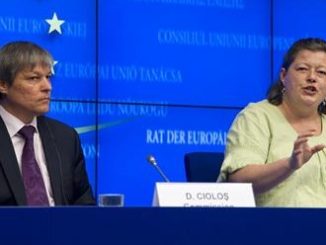The European Commission has opened a public consultation on the cloning of animals as part of “…the ongoing impact assessment on the possible measures on animal cloning for food production in the EU.” Running over the holiday period, the consultation closes on September 3 and will be used to justify either a ban (temporary or permanent) on cloning or a series of de facto rubber-stamping exercises that would potentially see cloning move from the laboratory to food production.
Under current EU legislation pre-market authorisation is required to sell food from clones, although no such requirement is made of food from offspring or descendants of clones. At present, cloning is allowed but complicated and expensive, so the question of pre-market authorisation for food purposes hardly arises.
The anodine nature and weighting of the default justifications for demanding a ban makes it worthwhile preparing the response in advance, for which the full survey can be downloaded. Although the questionnaire server will give respondents 90 minutes to answer the complex questions, incomplete surveys will not be counted.
The rapid return of this pariah problem to the public consultation overlooks the fact that most of the European public simply does not want to have anything to do with yet another high risk technology. Just over a year ago, cloning was the subject of an inconclusive but heated all-night conciliation meeting between the European Parliament, the European Commission and the Council of Ministers.
Leaving the meeting, chair of the EP delegation, Gianni Pittella, made a forthright statement: “We want to guarantee the consumers’ rights at any cost. Mainly through the labelling the food products like meat, milk, yogurt, eggs … and all those products that can derivate from cloned animals or offspring of cloned animals.”
However, this clear and transparent position was resisted at every turn: “The Council and the Commission want to label only ‘fresh meat’ of beef, which is actually already labelled and from which we already know everything in Europe, even where the beef comes from!” Pittella exclaimed.
“We have negotiated for 12 hours, and previously for months, and we have not succeeded in moving this blocking position of Council, so we have decided that, rather than accepting such a poor compromise, a compromise that would be a joke for the citizen’s rights, we would not to accept the agreement and we therefore oblige the European Commission to act responsibly and come up with a new legislative proposal.”
An exhausted novel foods rapporter, MEP Kartika Liotard followed, explaining that: “…cloned meat can enter the EU and that is not what the European citizens want for 77%. That is what the Parliament tried to defend all the time. European citizens so not want products from cloned animals on their plates.”
Such a clear message to member state governments should carry some what in a democracy, the MEP argued: “The Parliament represents the citizens but the governments should do so as well. And if you see that they are not representing the EU citizens, but actually they are representing pressure from the US to get trade in meat from cloned animals or products from cloned animals. I don’t think they represent the ones they should represent.”
In 2010, the European Food Safety Authority (EFSA) concluded that cloning “… can present welfare challenges for the surrogate mothers and for clones, often at perinatal/juvenile stage and often severely. In the 2010 statement, the overall efficiency of cloning was compared with efficiency of other selective breeding techniques.”
Yet the EFSA website explanation of cloning tries to make the complex process of substituting a body (somatic) cell for an unfertilised egg nucleus sound as simple as plant propagation by grafting or taking cuttings. The reverse is in fact nearer to the reality.
By way of an example, the genetic material of the original English Bramley apple tree has been sold commercially for the past 150 years, during which time the process has needed nothing more complicated than a grafting knife. This is poles apart from a three-way laboratory test-tube shuffle in which a living cell is embedded in a specially-prepared egg before growing on a foetus in a surrogate mother.





